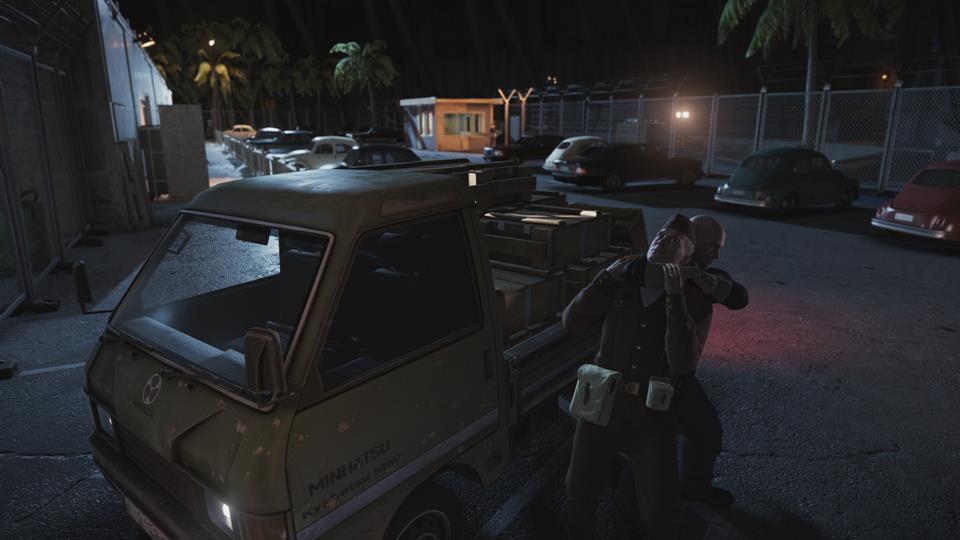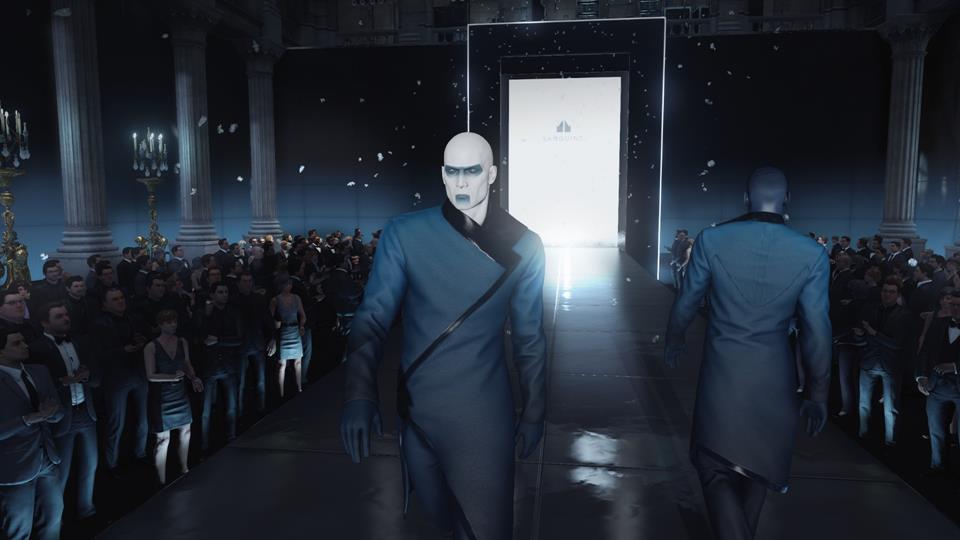Hitman’s release might be a mess, but the game could be a series best
Agent 47 is back, and Hitman is a puzzle game once again.
"The promise here is that each level is essentially an intricate Rube Goldberg machine of AI sequences – but the slightest touch from your assassin’s hand and the whole machine can spin off in unexpected and brilliant new direction"
I'll never quite forget the first time I saw 2012's Hitman Absolution in action. A few things made that E3 demo particularly memorable. For one, the air conditioning in the box of a presentation room was broken, leaving the 30-minute demo sweltering and uncomfortable. The volume was cranked up hugely perhaps to distract from this fact, and inception-style 'bwahhh' horns in the demo practically blew my eardrums. Afterwards IO Interactive staff handed over super-cool business cards etched into metal with edges so sharp it might actually pass as a concealed weapon.
While memorable, those things aren't what I remember most about that demo. Primarily I remember being blown away by Glacier 2, IO's new engine, but let down by the game's design. Even in an E3 demo clearly designed to toe the line and appease fans, it seemed too inclined to hand-hold and distracted by other flavours of the generation, including a scripted Uncharted-style section where 47 is stalked by a helicopter. It didn't seem enough like the Hitman I loved, and that was something borne out in the final release.
It's a relief to report that IO seems to have finally figured it out. The simply titled 'Hitman' - or at least the first episode of it - is the fulfilment of the promises of what modern technology could bring to the series’ formula, allowing for what feels like the its most open and fluid experience.
Feedback from Absolution has clearly been taken to heart, and even the story missions of 2016's Hitman are pretty much entirely open-ended. Each level is a decently-sized little sandbox, but what this game is really about isn't the scale of its levels, but the depth.
If left to its own devices, the basic mission in the Paris Level will see certain key NPCs move around on a specific path as they go about their business. However, when you insert Agent 47 and the player into the mix everything changes, with experimentation almost always rewarded.
In my first run I pull a fire alarm and then notice this causes my target to dash for the basement to a lockdown panic room - but the panicked run from his pre-planned public appearances to that room leaves him vulnerable in a corridor with only one guard, which is where I ultimately strike.
This is a larger example, but other things can cause the AI routines to adjust and subvert themselves in fascinating ways. The promise here is that each level is essentially an intricate Rube Goldberg machine of AI sequences - but the slightest touch from your assassin's hand and the whole machine can spin off in unexpected and brilliant new directions. Hitman is a puzzle game again. 'Emergent gameplay' is a buzz term I'm not keen on, but this certainly feels like that, especially early on when you don't know what sort of response your deeds are going to cause.
Paris is the best example of this in 'episode one', but that's because it's the only truly full-sized level in this chunk of the game, clocking in at six times the size of the largest Absolution level according to Square Enix. The marketing bullet point is that there's three levels, but two are much smaller and essentially work as a tutorial, though all three have that same open-ended design if not the breadth and depth in map size and objectives.
"Three levels?!" I hear you cry - it seems blasphemous. And it would be, if this chunk of Hitman wasn't a mere 12 quid. In truth this package feels like pretty good value to me, but it's been extraordinarily poorly explained by Square Enix, especially thanks to some chopping and changing around the game's planned delivery throughout its development.
Here's the rub:
- If you just want to try out the two tutorial locations and Paris, out now, the 'Intro Pack' is £12 ($15).
- The full game is £45 ($60) or thereabouts, but all the parts aren't out yet - so you're essentially paying for levels that’ll arrive via update over the coming months, which will add up to an amount of content equal to past Hitman releases.
- If you buy the Intro Pack and later decide to upgrade, that'll cost an extra £37 ($50), making it marginally more expensive to buy in two bits than in one.
- You can also buy additional levels for £8 ($10) a pop as they release, adding up to an extra £40 total.
It's actually fairly simple, but the journey and communication of this information has been a bit of a mess. If you need an infographic to explain your game's release you've probably cocked up, and if you then have to amend it because things have changed further still, you've definitely made a pig's ear of it. That's on-going even now, with the full and final disc-based release just delayed again into 2017.
This confusion does the game a disservice, as what’s out now is bloody good value. Every one of its three locations is packed with items to use and paths to take. Emphasized in particular is the challenge system, which encourages players to experiment and learn, offering hints along the way.
Experienced players might balk at this stuff, but I think it’s a fair concession to make to invite more people into the fold. The game tracks ‘opportunities’, for instance – potential routes to get to and take out your target discovered via overheard dialogue or clues in the world itself. With some menu management, you can see the best way to use that information to your advantage – or you can go off and find another way. If you’re a real stickler, you can lose the elements of the HUD that offer hints, making it much more about intuiting from the world and dialogue.
If you want to be what Ian Fleming would’ve described as a Blunt Instrument, you can be – but there’s also numerous ways to set up unfortunate ‘accidents’, many of them gleeful in how slightly silly they are.
Challenges and the like don’t just apply to the main missions, but to other optional tasks, too. With each level an intricate sandbox, the game then posits an interesting question: So you know this level, but what if you have a completely different target? Suddenly half the information you have is worthless, and elements of the level have to be re-learned.
"If you need an infographic to explain your game’s release you’ve probably cocked up, and if you then have to amend it because things have changed further still, you’ve definitely made a pig’s ear of it."
In addition to a plethora of challenges and tasks there as default, IO plan to have weekly rolling challenges and the like also, so new ways of looking at old maps will be added regularly.
It’s a clever approach – you’re technically playing the same level, but so much is different that you don’t feel cheated. Every mission is designed to be replayed because there’s no ‘right’ or ‘best’ way to do things, and you’re constantly compelled to experiment and explore. Better still, it’s brilliantly fun to do so.
So Hitman’s release schedule was poorly communicated, but it’s now no longer important. The game itself seems to work just fine within those constraints. It’s a contender for my favourite Hitman mechanically, and I don’t say that lightly – after all, Blood Money exists.
Where the game falls flat is all the bit that isn’t actually, well, the game. The menus are sluggish and load times are utterly ridiculous for a game which actively encourages both liberal use of menus to track challenges mid-mission and regular resets of missions – but these are smaller issues considering the quality of the actual game.
What remains an unknown is how well the game’s five additional locations will hold up, or if Square and IO will hold to their promise to release them in a timely fashion. That’s impossible to judge.
As such, let’s take a step back to close: Is Hitman Episode One worth its £12 asking price? Yes. There’s no question. Will the ‘full’ release be worth the cost if the additional five maps live up to the standard set here? Also – yes. For now, though, we can only judge what we have so far… but for my money, this slice of assassination is about as satisfying as it could be, and a huge step up from Absolution.





















